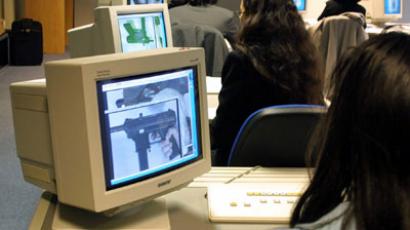3D printer for creating untraceable AR-15 rifles hits market

Defense Distributed has offered a pre-sale of its new milling machine which allows buyers to print and assemble a steel AR-15 rifle in the comfort of their own home. The weapon is completely untraceable.
Ghost Gunner is the company’s new computer-numerically-controlled
(CNC) milling machine. Unlike its so-called Liberator gun, which is a plastic gun design to be
created via a 3D printer, the Ghost Gunner is the PC-connected
hardware for manufacturing the lower receiver of the popular
AR-15 rifle.
The receiver is the control part of a firearm which houses the
operating parts and serves as the frame of the gun. Without it,
the weapon is inoperable. It is also where the manufacturer
places the serial number, which is required by law.
The US does allow for creating a firearm from parts or kits,
according to the Bureau of Alcohol, Tobacco, Firearms and
Explosives (ATF), which states: “[An] unlicensed individual may
make a 'firearm' as defined in the GCA for his own personal use,
but not for sale or distribution.”
As a way to get around that law, manufacturers can make a
semi-finished lower receiver that “isn’t technically a gun,
but gets as close to the line as possible,” Ars Technica
reported. The metal piece is usually 80
percent finished, and can be purchased from a variety of
companies. The Ghost Gunner machine will finish the lower
receiver, and then customers can purchase the rest of the AR-15
parts online, without being subjected to waiting periods or
background checks.
The company’s co-founder, Cody Wilson, is a self-described
anarchist. He told Wired that he wants to make the process of
avoiding government weapons regulations easier and more
accessible than ever before.
“Typically this has been the realm of gunsmiths, not the
casual user. This is where digital manufacturing, the maker
movement, changes things,” he said. “We developed
something that’s very cheap, that makes traditional gunsmithing
affordable. You can do it at home.”

Last year, when Defense Distributed announced the blueprints for the Liberator – the world’s first 3D-printed plastic gun ‒ Congress responded by approving a 10-year extension to the Undetectable Firearms Act of 1988 which prohibits gun manufacturers from making firearms invisible to metal detectors.
The plastic gun required customers to have an expensive 3D printer, and then retrieve the digital blueprints from a website like Pirate Bay, a torrent site that hosts information despite objections from the US Department of State and other governments worldwide.
But the process is much easier with the Ghost Gunner, which comes
with a $1,300 pre-sale price tag and will ship in January.
“If you can assemble a firearm or operate a 3D printer, you
can use Ghost Gunner,” the company said on its website.
“We found existing CNC machines too expensive, too DIY, or
too inaccurate to manufacture firearms for the casual user,”
Defense Distributed noted on its decision to sell its own
machine, rather than printable blueprints.
“By miniaturizing the build envelope to just large enough to
mill common firearm receivers, we were able to improve rigidity,
reduce material cost and simultaneously relax some design limits,
allowing us to sell an inexpensive machine with more than enough
accuracy to manufacture firearms,” the company's statement
said.
Ghost Gunner reached capacity in 24 hours. We've committed to a new lot of 100 for shipping January 2015. At $1299. https://t.co/Njaw7aNhSW
— Defense Distributed (@DefDist) October 2, 2014
Wilson said the switch is a practical one.
“3D printing [guns] was about signaling the future. This is
about the present,” he told Wired. “You can use this
machine today to create something to the standards you’re used
to...The gold standard of the gun community is metal.”
A bill in California that would have outlawed so-called
“ghost guns” ‒ untraceable firearms that do not contain
government-assigned serial numbers ‒ was vetoed by Democratic
Gov. Jerry Brown, who said he “can’t see how adding a serial
number to a homemade gun would significantly advance public
safety.”














